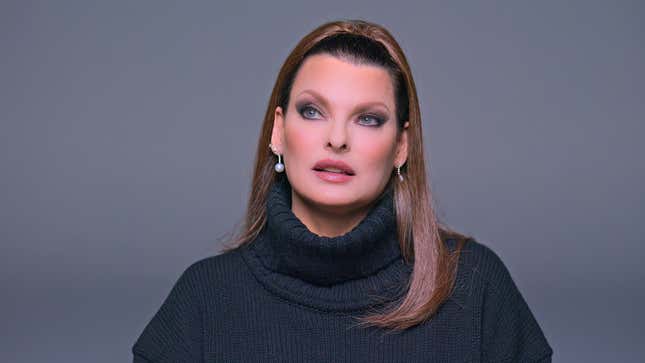‘The Super Models’ Is a Glossy, Mostly Feel-Good Trip Back in Time
The four-part AppleTV+ docuseries is more interested in seducing than challenging but is, at minimum, highly watchable.
EntertainmentTV

There’s something very safe space about Roger Ross and Williams Larissa Bills’ new AppleTV+ docuseries The Super Models. It’s a place for the crown jewels of 80s and 90s supermodeldom—Linda Evangelista, Naomi Campbell, Christy Turlington, and Cindy Crawford—to be seen, heard, and worshiped. They tell the interconnected stories of their rises to fame on seemingly their own terms, without much pressure or discomfort. All of the models are credited as executive producers, and the doc has that “fully authorized” feel. This isn’t really the place for hard questions or bombshell revelations, though. And it’s not much of a reassessment of an institution that seemed to regard the self-image of non-models (i.e. most of the population) as collateral damage. It’s easy to watch, breezy in its approach, and often quite beautiful. It comes with a certain assumption that the viewer already cares about these women and what they have to say although, using their trajectories and eventual influence, it does roughly tell the story of fashion during the titular supermodels’ peak years. For those who come in not caring, the copious footage of them dominating various runways may be enough to win them over—watching Linda, Naomi, Christy, and Cindy float down the catwalk as if they control gravity is all you need to understand their greatness.
“You have to imagine, the boutique was my whole closet. What girl of 16 years old has an Alaïa shop as her closet?” asks Campbell, referencing her time as the young muse of designer Azzedine Alaïa while maintaining her mythic status. These people are not like us, and that’s exactly why we’re watching them. There’s a looseness in The Super Models that harkens back to the 1995 doc Unzipped and the 80s-90s MTV series hosted by Crawford, House of Style, both of which are excerpted in the series. The Super Models gives substance to superficiality, and as a result, it’s never dry and has high rewatch potential. It’s a mostly talking head/archival affair—and for an outside perspective, the models are joined by opining designers and journalists like Donatella Versace, John Galliano, Robin Givhan, and Michael Gross. Candid moments of the four profiled models abound—both separately and together. It’s the epitome of, as they said in the 80s, infotainment. We watch a modern-day Campbell zip through Kenya on a Wolverine ATV and dock in coastal Nigeria. Upon de-boating, someone asks Campbell for a picture with her and she responds, “I’m on a private visit, thank you so much,” as she walks by. And then, over her shoulder: “Where are you from?” When her admirer answers, “Syria,” she turns around and says, “OK, give me,” only to critique the way her hair looks as she tries to get the right shot. She later explains to the camera that such an encounter hasn’t happened in “months and months” and that her knee-jerk rejection came from her experience with paparazzi. She almost scolds herself for seeing fans and paps as one and the same: “And they’re not, they’re nice people.”
-

-

-

-

-

-

-

-

-

-

-

-

-

-

-

-

-

-

-

-

-

-

-

-

-

-

-

-

-

-

-

-

-

-

-

-

-

-

-

-











































